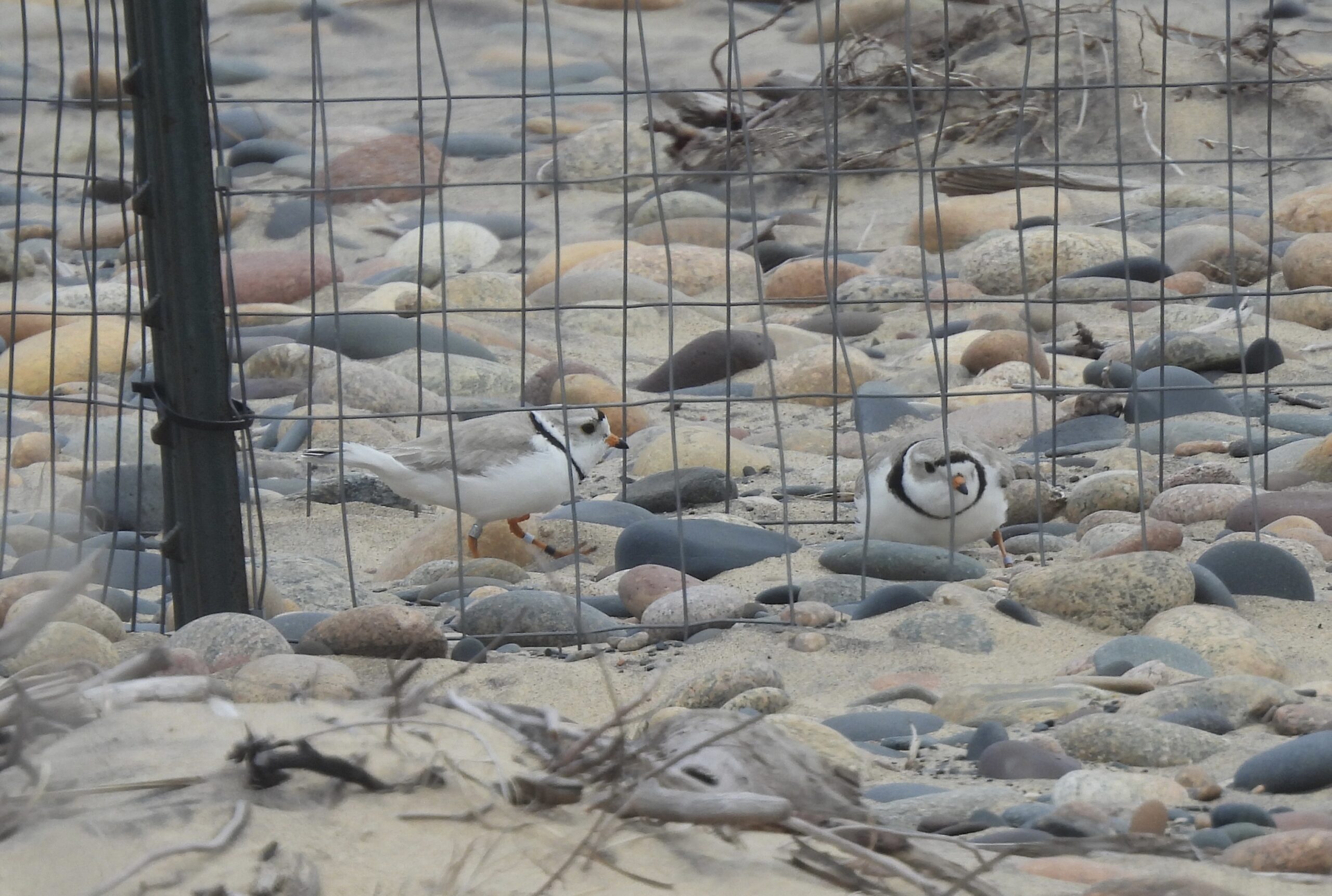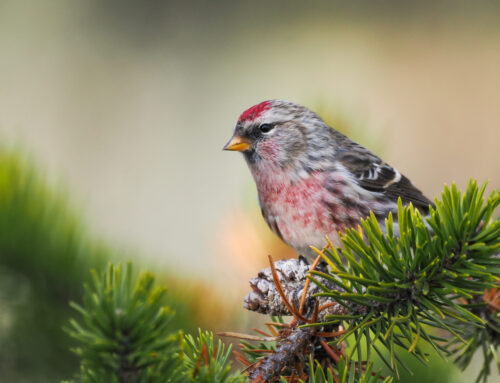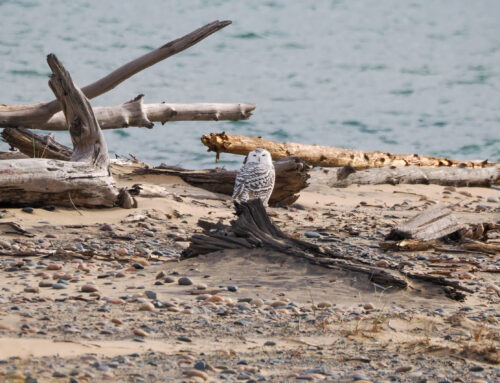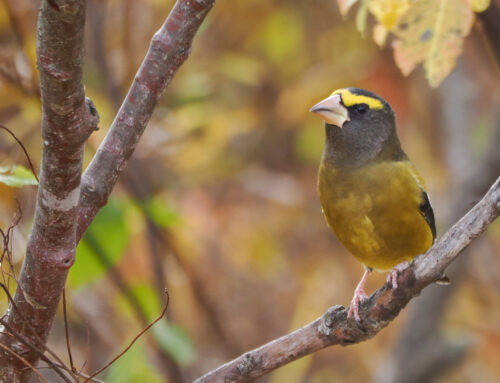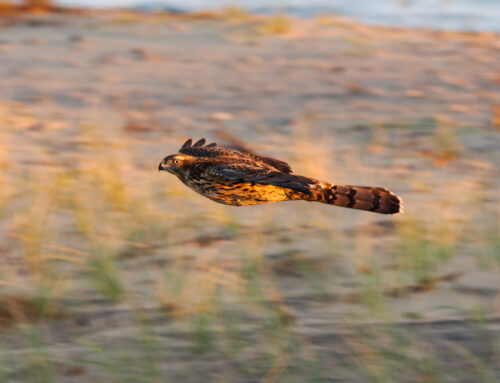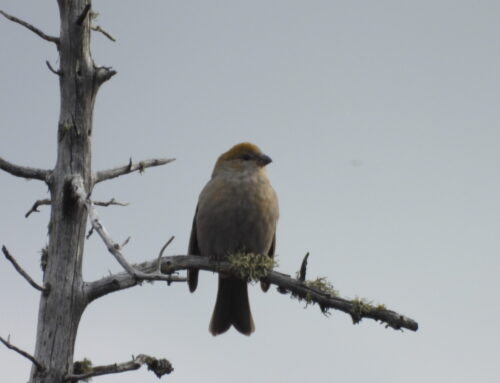Whitefish Point
I’m glad to report that nesting progress at Whitefish Point is running smoothly. Each day Little Bill Bob and his mate Vie take turns incubating their nest of four, switching shifts about every hour.
When one does leave the nest to forage, it’s not unlikely to run into Hot Shot on the shore in front of the Waterbird Shack. Sadly these three are the only plovers who’ve taken residency at the Point so far this year, but there’s still time for others to arrive.
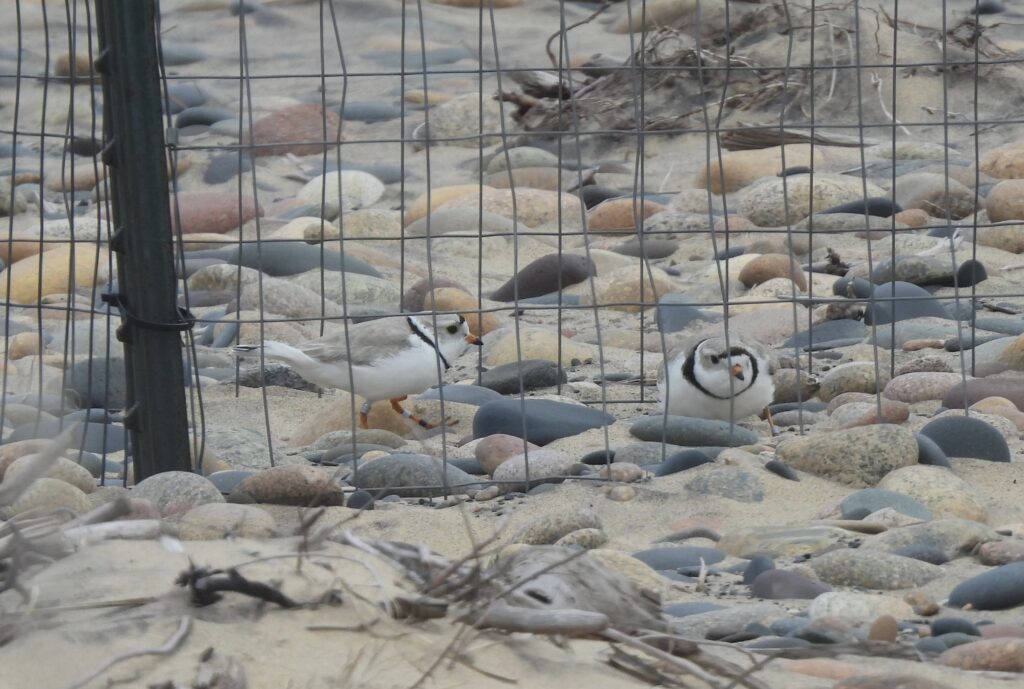
WFP PIPL Little Bill Bob and Vie trading turns incubating their nest. Photo by Polly Sheppard
In good news, one of the female captive-reared chicks released at Whitefish has turned up in the Great Lakes. X,-:Of(K4),O/VB was spotted recently at Sleeping Bear Dunes, where she originated from before her brood was taken in. If only her sister would return to the Point.
I’d like to take some time to inform readers about safe distances to view PIPL. The general distance of comfort for plovers to humans is at least 100 feet. Please respect the exclosed space, especially while nesting. When humans get too close to the nest, the incubating plover will stop and run off fearing a predator. Too many disturbances may influence a plover to abandon its nest. If the waves are washing too high on the shore to cross, please do not climb onto the higher ledge of the beach near the nest. This scares the plovers. There is a safe walkway between the dunes and the exclosed area to cross the beach.
I’d also like to thank Cheryl Hamant and Polly Sheppard for volunteer monitoring while I’m away. They do an amazing job watching over the plovers, helping to ensure the success of this nest.
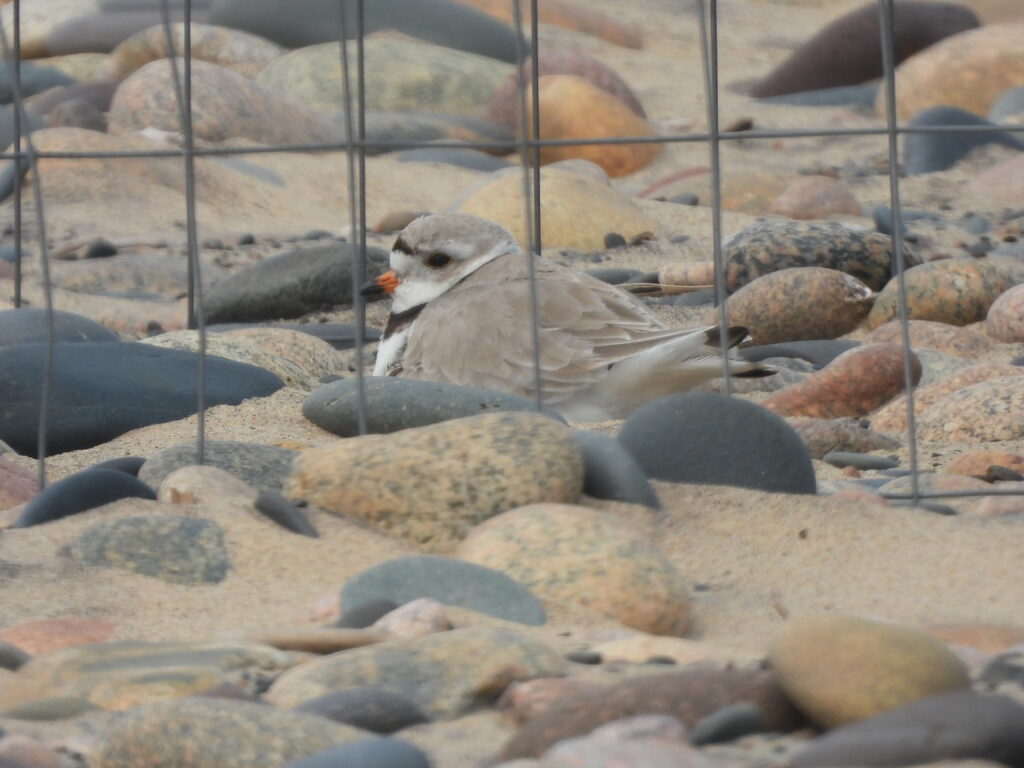
PIPL Vie on her nest at WFP. Photo by Polly Sheppard
Vermilion Point
Unfortunately, the female from Nest 1 at Vermilion did not show. On May 29 the four eggs were salvaged and brought to the Captive Rearing Station in Pellston, Mich. Here they will be hatched, reared and fledged, eventually to be released into the wild later this season.
Nest 2 is cruising along fine. The pair has 3 eggs now, which may be their end total. I have decided on names for these two plovers. I’ll call X,-:O,B (R dot, B239) (Male) “Rusty” for his Red dot, and X,-:O,B (G dot, B258) (Female) “Gladys” for her Green dot. This pair is the most skittish plovers I’ve met, peeping at me with alarm whenever sighted. The two seem to be incubating with just 3 eggs, taking turns sitting on the nest the entire afternoon of June 4.
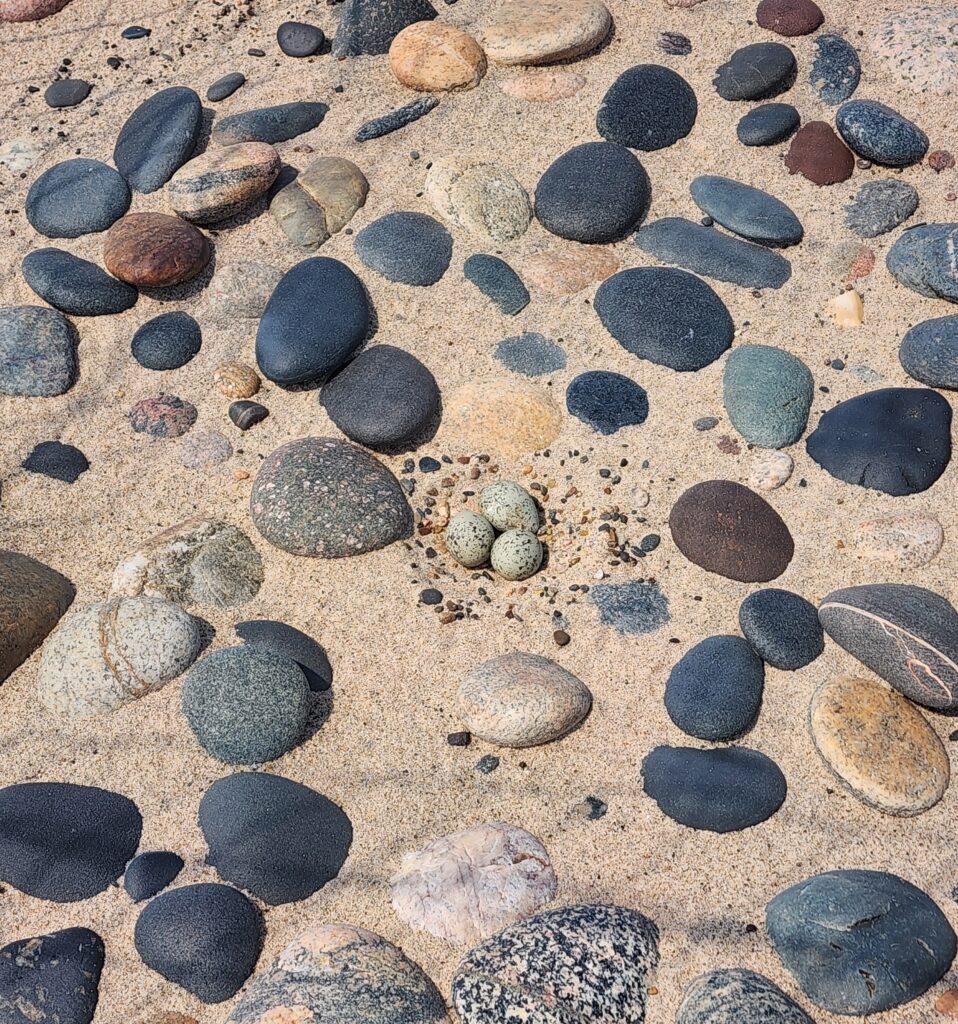
PIPL Nest 2 at Vermilion Point. Photo by Stephanie Owens
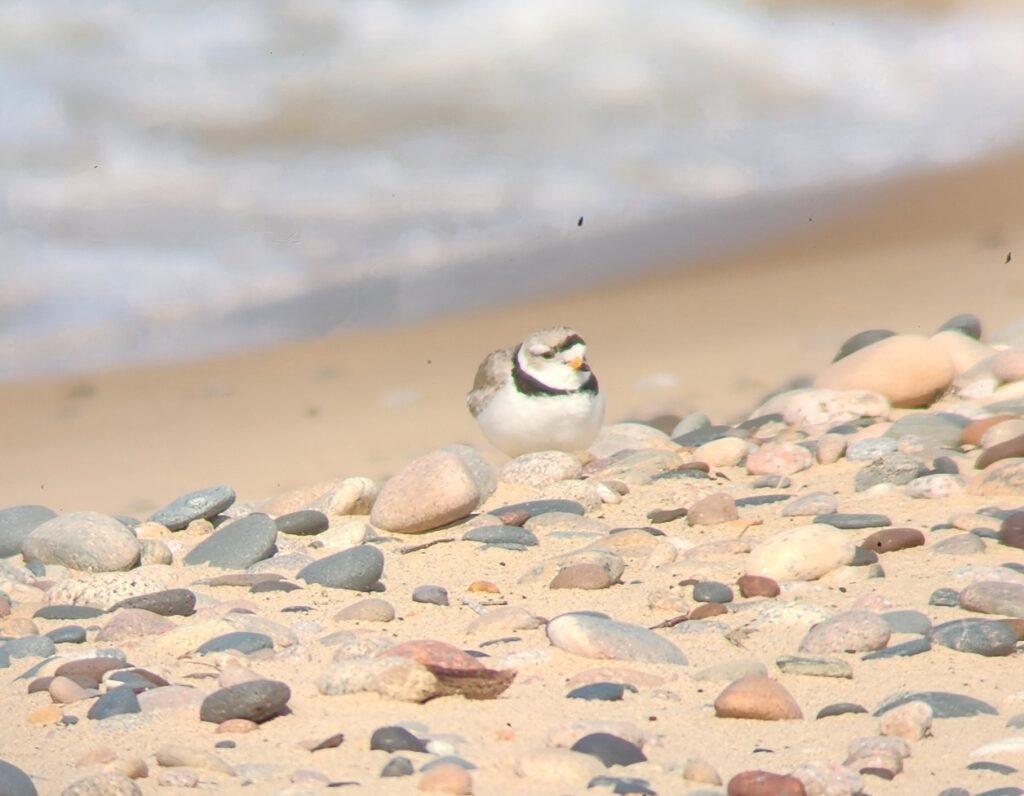
Vermilion PIPL “Rusty.” Photo by Stephanie Owens
~ Stephanie Owens, 2025 Piping Plover Monitor
Piping Plover monitoring is a collaborative effort between Michigan Audubon and Seney National Wildlife Refuge (USFWS).
You can keep up with the 2025 Piping Plover action at WPBO by reading Stephanie’s blog posts and following WPBO’s social media (Facebook, Instagram, and X).
Stephanie Owens: 2025 Piping Plover Monitor
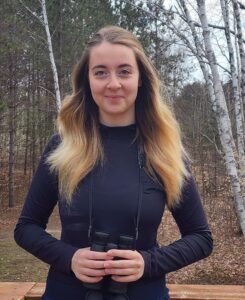 Having grown up in the Upper Peninsula of Michigan, an appreciation of the outdoors seemed inevitable for Stephanie. Walks in the woods with her father and high school science courses helped her identify this passion. In 2024, she earned a Bachelor of Science in Conservation Biology from Lake Superior State University, where she completed her senior thesis on the distribution of per- and polyfluoroalkyl substances in Eastern Upper Peninsula waterways. Now, with three seasons of PIPL monitoring under her belt, she looks forward to another summer with the U.P. plovers and returning to WPBO after a successful ’24 season. After the end of last season, Stephanie began her work at Eva Burrell Animal Shelter as a canine caretaker, fostering hope and love for all animals there.
Having grown up in the Upper Peninsula of Michigan, an appreciation of the outdoors seemed inevitable for Stephanie. Walks in the woods with her father and high school science courses helped her identify this passion. In 2024, she earned a Bachelor of Science in Conservation Biology from Lake Superior State University, where she completed her senior thesis on the distribution of per- and polyfluoroalkyl substances in Eastern Upper Peninsula waterways. Now, with three seasons of PIPL monitoring under her belt, she looks forward to another summer with the U.P. plovers and returning to WPBO after a successful ’24 season. After the end of last season, Stephanie began her work at Eva Burrell Animal Shelter as a canine caretaker, fostering hope and love for all animals there.

